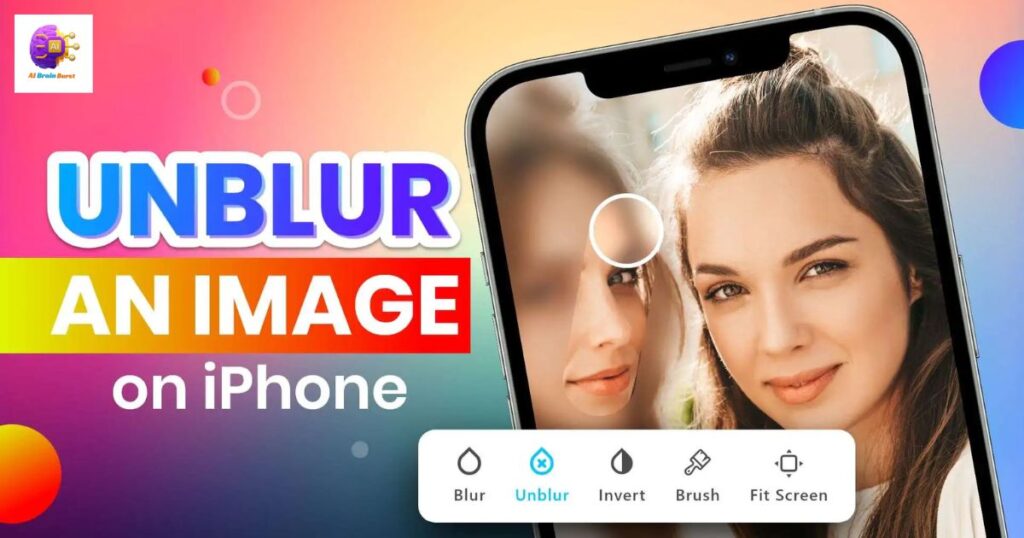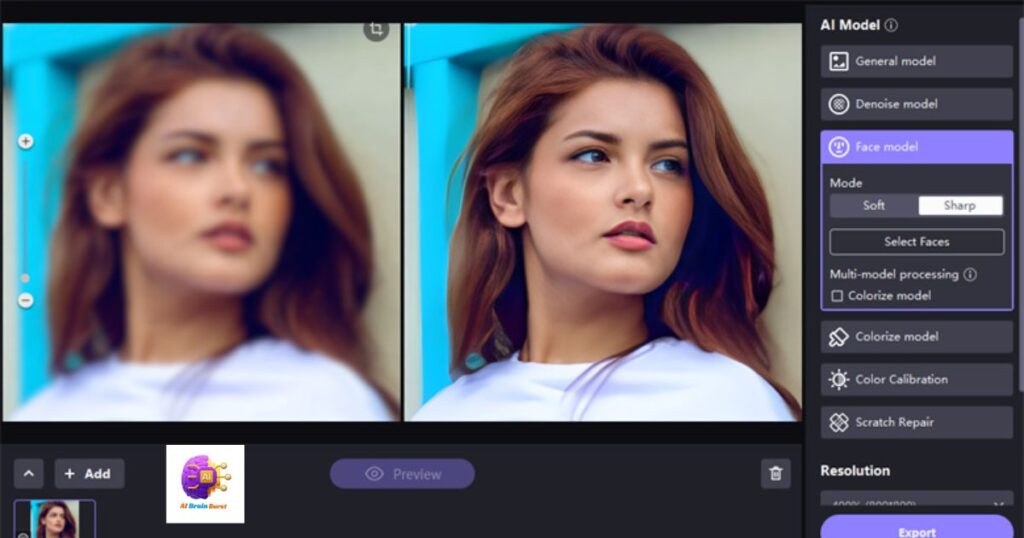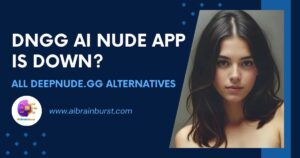Unblurring DeepNude images presents a technical and ethical challenge due to the nature of their generation process.
DeepNude apps use AI algorithms to digitally alter clothing in photos, making the blurring effect integral to the image itself.
Attempting to reverse this blurring is not feasible, given the irreversible nature of the process and the ethical concerns surrounding privacy and consent.
It’s crucial to prioritize responsible use of technology and respect individual privacy in digital spaces, rather than seeking methods to unblur DeepNude images.
Curious about unblurring DeepNude images? Discover the truth behind this challenging task and learn how to navigate ethical considerations in the digital world. Join us in exploring the complexities of image processing and the importance of responsible technology use.
Dive deeper into the discussion on ‘How to Unblur DeepNude images?’ and empower yourself with knowledge today!
The Technology Behind DeepNude Apps
The technology behind DeepNude apps revolves around a sophisticated AI algorithm known as Pix2pix.
Developed by researchers at the University of California, Berkeley in 2017, Pix2pix utilizes generative adversarial networks (GANs) to create realistic images by learning from a vast dataset.
These networks function by training a model on a large collection of images, in the case of DeepNude, over 10,000 nude images of women were used for training.
Pix2pix operates by learning the mapping between input and output images, allowing it to generate images that are visually similar to the input data.
In the context of DeepNude apps, this means digitally altering clothing in photos to create a nude version of the image.
The process involves the model continuously refining its predictions based on the training data, resulting in increasingly accurate and realistic outputs.
Despite its technological advancements, Pix2pix and DeepNude apps raise ethical concerns regarding privacy and consent, including whether it’s legal to use the DeepNude app.
The ability to generate highly realistic nude images of individuals without their consent highlights the potential misuse of such technology.
As AI continues to evolve, discussions around responsible use, regulation, and ethical boundaries become increasingly critical.
Key Points:
- Pix2pix is an AI algorithm that utilizes generative adversarial networks (GANs) to generate realistic images.
- DeepNude apps leverage Pix2pix to digitally alter clothing in photos, creating nude versions of images.
- Ethical considerations regarding privacy and consent are central to discussions surrounding Pix2pix and DeepNude technology.
Popular Unblurring Tools

Popular unblurring tools have gained traction in the digital realm, offering solutions to enhance and clarify blurred images.
These tools employ advanced algorithms and techniques to reverse the blurring effect, providing users with sharper and more detailed images.
Among the widely recognized unblurring tools are Wondershare, Adobe, and Spyne.ai, each offering unique features and functionalities to cater to diverse user needs.
- Wondershare: Known for its user-friendly interface and powerful deblurring capabilities, Wondershare provides an accessible solution for enhancing image clarity.
- Adobe: Leveraging its expertise in image editing and processing, Adobe offers sophisticated unblurring tools as part of its suite, catering to professionals and enthusiasts alike.
- Spyne.ai: Powered by AI technology, Spyne.ai’s image deblurrer tool excels in restoring details and reducing blurriness, making it a popular choice among photographers and content creators.
These unblurring tools have revolutionized the way we perceive and enhance digital imagery, enabling users to transform blurred photos into clear, high-quality visuals with ease.
The Misconception of ‘Unblurring’
The misconception surrounding ‘unblurring’ in the context of DeepNude images stems from a fundamental misunderstanding of how these images are generated.
Unlike traditional blurring, which can often be reversed using specific tools or techniques, the blurring effect in DeepNude images is an inherent part of the image generation process itself.
This means that attempting to ‘unblur’ DeepNude images is technically unfeasible due to the complex algorithms and AI models involved.
- Irreversible Blurring: DeepNude images undergo a transformative process where the blurring is not simply an added layer but a result of the AI model’s generation, making it difficult to reverse.
- Integral to Image Generation: The blurring effect is intricately woven into the image creation process, making it challenging to separate the blurred elements from the rest of the image.
- Ethical and Legal Concerns: Apart from technical limitations, attempting to unblur DeepNude images raises serious ethical concerns regarding privacy, consent, and potential misuse of such images, further complicating any efforts to reverse the blurring effect.
It’s crucial to dispel the misconception of ‘unblurring’ DeepNude images and instead focus on addressing the broader ethical and societal implications associated with the use of such technologies.
How To Unblur a Photo?

Unblurring a photo involves using specialized tools and techniques to enhance the clarity and sharpness of an image that may have been affected by blurring, whether due to motion blur, out-of-focus capture, or other factors.
While there is no one-size-fits-all approach to unblurring, several methods can be employed depending on the nature and extent of the blurring.
These methods range from basic adjustments in image editing software to more advanced algorithms and technologies designed specifically for deblurring purposes.
- Image Editing Software: Programs like Adobe Photoshop and GIMP offer tools such as sharpening filters and deblurring functionalities that can help improve the clarity of a blurred photo.
- Deblurring Algorithms: Advanced algorithms and software applications, such as those developed by companies like Topaz Labs and DxO, use sophisticated techniques like deconvolution to reverse the effects of blurring and restore image detail.
- AI-Powered Solutions: AI-driven deblurring tools, such as those offered by Topaz Labs’ AI Clear or Adobe’s Sensei technology, leverage machine learning and neural networks to analyze and enhance image quality, including reducing blurriness.
It’s important to note that while these tools and methods can significantly improve the quality of a blurred photo, they may not always fully eliminate blurriness, especially in cases of severe or complex blur.
Additionally, ethical considerations should be kept in mind when using these tools, especially in scenarios involving privacy and consent.
Limitations of Unblur Image
The process of unblurring images, while effective in many cases, comes with its own set of limitations that users should be aware of.
One of the primary limitations is the degree of blur present in the original image. If the blur is severe or extensive, it may be challenging to fully restore the image’s clarity and detail, even with advanced deblurring tools and techniques.
Additionally, certain types of blur, such as motion blur or out-of-focus blur, may be more difficult to correct compared to other forms of blurring.
- Degree of Blur: The severity of the blur directly impacts the effectiveness of unblurring methods, with more significant blur often resulting in reduced clarity even after correction attempts.
- Type of Blur: Different types of blur, such as motion blur caused by camera movement or out-of-focus blur due to improper focusing, require specific approaches for effective deblurring, adding to the complexity of the process.
- Image Quality: The overall quality and resolution of the original image also play a role in the success of unblurring efforts, as higher-quality images tend to yield better results compared to low-resolution or heavily compressed images.
While unblurring tools and technologies continue to improve, it’s important to manage expectations regarding the extent to which blurriness can be corrected, especially in challenging scenarios involving severe blur or poor image quality.
Use Cases of Unblur Image

Unblurring images finds application across various fields and scenarios, offering valuable solutions for improving image quality and clarity.
One common use case is in photography, where photographers often encounter challenges such as motion blur or out-of-focus shots.
By utilizing unblurring techniques, photographers can enhance the sharpness and detail of their images, resulting in more visually appealing photographs.
- Photographic Restoration: Unblurring is widely used in the restoration of old or damaged photographs, helping to revive and preserve historical images by reducing blurriness and enhancing overall quality.
- Forensic Analysis: In forensic investigations, unblurring techniques play a crucial role in analyzing blurry or obscured details in images, aiding investigators in gathering evidence and solving cases.
- Medical Imaging: Unblurring methods are also employed in medical imaging, particularly in radiology, to improve the clarity of scans and diagnostic images, facilitating more accurate diagnoses and treatment planning.
These diverse use cases demonstrate the versatility and significance of unblurring techniques in various industries, showcasing their ability to address a range of challenges related to image quality and clarity.
Why Do You Need AI to Unblur Image?
AI plays a crucial role in unblurring images due to its advanced algorithms and machine learning capabilities, which enable it to analyze and process visual data in a way that surpasses traditional methods.
One of the main reasons for using AI in unblurring is its ability to learn and adapt from vast datasets, allowing it to understand complex patterns and nuances in image blurring that may be challenging for human-driven techniques to decipher.
- Complexity of Blur Patterns: AI excels in handling intricate and varied blur patterns, such as motion blur or out-of-focus blur, by leveraging deep learning algorithms that can identify and correct specific types of blurring with high accuracy.
- Automated Optimization: AI-driven unblurring processes often involve automated optimization techniques that fine-tune parameters and adjustments to achieve optimal results, reducing the need for manual intervention and streamlining the workflow.
- Continuous Improvement: AI systems for unblurring images continuously learn and improve over time, refining their algorithms based on feedback and new data, leading to enhanced performance and efficiency in deblurring tasks.
By harnessing the power of AI, individuals and organizations can achieve superior results in unblurring images, overcoming the limitations of traditional methods and unlocking new possibilities in image enhancement and restoration.
Which Images Can Be Unblurred?

The feasibility of unblurring images depends on various factors, including the type and severity of blur present in the image.
Generally, images that exhibit mild to moderate blurring due to factors such as camera shake, motion blur, or slight focus issues can be effectively unblurred using appropriate tools and techniques.
These images typically retain enough information and detail for unblurring processes to yield noticeable improvements in clarity and sharpness.
- Mild to Moderate Blur: Images with mild to moderate blur, such as slightly blurred photographs or videos, are often suitable candidates for unblurring, as the blurriness is not too severe and can be corrected with precision.
- Consistent Image Quality: Images with consistent and uniform blur throughout the frame are more conducive to successful unblurring compared to images with irregular or heavily distorted blur patterns.
- High-Resolution Images: Higher-resolution images tend to fare better in unblurring processes, as they contain more data and detail, allowing for more accurate restoration of sharpness and clarity.
However, it’s important to note that images with severe blur, extensive distortion, or low resolution may pose challenges in terms of achieving satisfactory unblurring results.
Additionally, certain types of blur, such as Gaussian blur intentionally applied for artistic effects, may not be suitable for traditional unblurring methods and may require specialized approaches or creative adjustments.
Ethical Considerations
Ethical considerations are paramount when dealing with image processing technologies like unblurring tools, especially in contexts where privacy, consent, and potential misuse are significant concerns.
One of the primary ethical considerations revolves around the consent of individuals whose images are being manipulated or enhanced.
Ensuring that individuals are aware of and have consented to the use of their images in such processes is essential in upholding ethical standards.
- Privacy and Consent: Respecting individual privacy and obtaining explicit consent for the use of images in unblurring or other processing activities is crucial to avoid potential privacy violations and ethical dilemmas.
- Potential for Misuse: Image manipulation technologies, including unblurring tools, can be misused for unethical purposes such as creating non-consensual explicit content or altering images in misleading ways, highlighting the need for responsible use and regulation.
- Transparency and Accountability: Maintaining transparency in the use of image processing technologies, disclosing the methods and purposes of image manipulation, and holding accountable those responsible for handling and processing images are essential ethical practices.
Furthermore, ethical considerations extend beyond the technical aspects of image processing to encompass broader societal impacts, including the potential reinforcement or perpetuation of harmful stereotypes, biases, or misinformation through manipulated images.
As such, ethical frameworks and guidelines play a crucial role in guiding the responsible development, deployment, and use of image processing technologies in a manner that prioritizes ethical principles and values.
Legal Implications
Engaging in activities related to unblurring images can have significant legal implications, particularly concerning issues of privacy, intellectual property, and consent.
One of the primary legal concerns is the potential violation of privacy rights, especially if the unblurring process involves images of individuals without their explicit consent.
In many jurisdictions, using or distributing images without the consent of the individuals depicted can lead to legal consequences.
- Privacy and Consent Laws: Many countries have laws and regulations in place that protect individuals’ privacy rights and require explicit consent for the use of their images in any form of processing or manipulation.
- Intellectual Property Rights: Unblurring images that are copyrighted or protected by intellectual property laws without proper authorization can result in legal disputes and claims of infringement.
- Non-Consensual Image Distribution: Engaging in activities to unblur images, especially if the images were obtained or distributed without the subjects’ consent, can be considered illegal in many jurisdictions and may lead to legal penalties.
It’s crucial for individuals and organizations involved in image processing activities, including unblurring, to be aware of and comply with relevant legal frameworks, obtain necessary permissions and consents, and uphold ethical standards to avoid legal repercussions and protect the rights of individuals depicted in the images.
Respecting Privacy and Consent
Respecting privacy and obtaining consent are fundamental principles that should guide all activities involving image processing, including unblurring.
Individuals have a right to control the use and distribution of their images, and it’s essential to obtain explicit consent before using or manipulating images in any way.
Respecting privacy and consent not only upholds ethical standards but also helps prevent potential legal issues and ensures the protection of individuals’ rights.
- Informed Consent: Obtaining informed consent involves clearly explaining to individuals the purpose, methods, and potential implications of using their images in unblurring or other processing activities and obtaining their explicit agreement.
- Privacy Protection: Respecting privacy means safeguarding individuals’ personal information and ensuring that their images are used responsibly and in accordance with relevant privacy laws and regulations.
- Ethical Considerations: Respecting privacy and consent is not only a legal requirement but also an ethical imperative, as it reflects a commitment to respecting individuals’ autonomy, dignity, and rights in digital spaces.
FAQ‘s
Q: How do you Unblur a completely blurred image?
A: Unblurring a completely blurred image can be challenging depending on the extent of the blur. Advanced image editing software like Adobe Photoshop offers tools such as deblurring filters or the shake reduction feature that can help improve clarity. However, for severe blurring, professional services or specialized software with deconvolution algorithms may be necessary.
Q: How to convert blur image to clear?
A: Converting a blurred image to a clear one involves using image editing tools and techniques. You can start by adjusting the sharpness, contrast, and brightness settings in editing software like GIMP or Adobe Photoshop. Additionally, AI-powered deblurring tools like Topaz Labs’ AI Clear or DxO’s PhotoLab can analyze and enhance image quality, reducing blurriness and improving clarity.
Q: How to remove blur text from an image?
A: Removing blur from text in an image requires precise editing tools and techniques. In image editing software, you can use the clone stamp tool or the sharpen filter to enhance text clarity. For more advanced deblurring, AI-driven tools like Sharpen AI or Unblur AI by Vance AI can intelligently analyze and restore blurred text, making it more legible.
Q: How to see blurred text on a screenshot?
A: To see blurred text on a screenshot, you can try zooming in on the image or using the magnifier tool to enhance text visibility. Additionally, image editing software with deblurring capabilities can help clarify blurred text. It’s also important to ensure that the screenshot resolution is high enough for effective text readability.
Q: How to see covered-up text?
A: Seeing covered-up text typically involves using image editing software to uncover or reveal hidden text layers. In programs like Photoshop, you can use the eraser tool or layer masks to remove covering elements and expose hidden text. Alternatively, using image enhancement techniques like contrast adjustment can sometimes reveal obscured text.
Q: How to read text on an image?
A: Reading text on an image can be facilitated by enhancing image clarity and contrast. Image editing software allows you to adjust brightness, sharpness, and contrast levels to improve text legibility. Additionally, OCR (optical character recognition) software can extract text from images, making it easier to read and manipulate text content.
Conclusion
In conclusion, unblurring images and improving text readability on images require a combination of effective tools, techniques, and considerations.
While image editing software and AI-driven tools offer solutions for enhancing image clarity and removing blur, it’s essential to approach these tasks with respect for privacy, consent, and ethical guidelines.
By using these tools responsibly and understanding the limitations and legal implications, individuals and organizations can leverage technology to achieve clearer, more legible images while upholding ethical standards in digital content creation and manipulation.
In today’s digital age, the ability to unblur images and enhance text on images has become increasingly accessible, thanks to advancements in image processing technology.
However, it’s important to remember that ethical considerations, such as obtaining consent and respecting privacy rights, should always guide our use of these tools.
By prioritizing responsible use and staying informed about legal and ethical implications, we can harness the power of image enhancement tools effectively and ethically in our digital endeavors.








